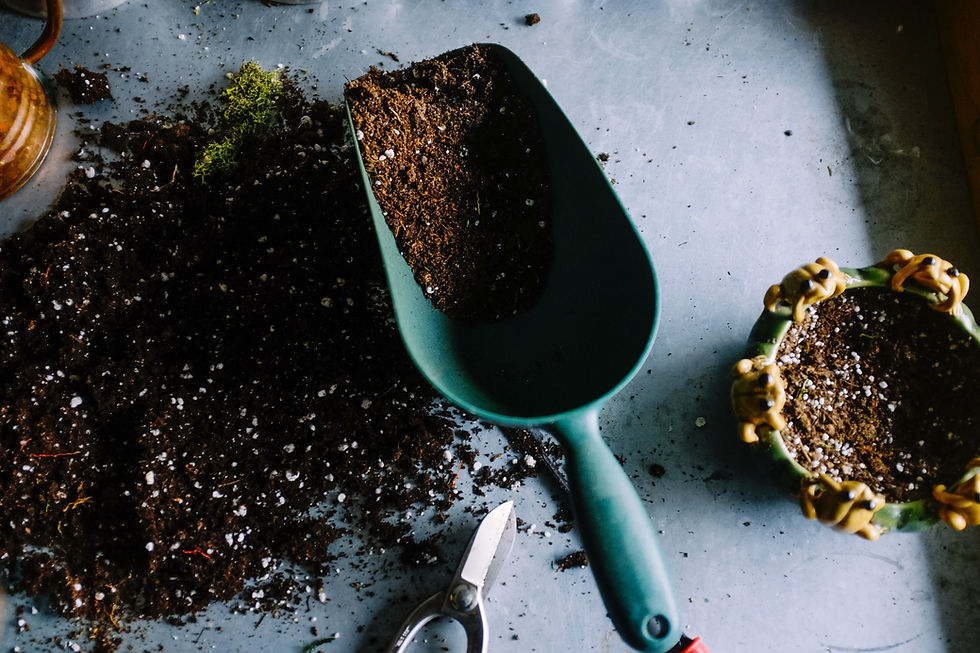5 Essential Spring Landscaping Tasks for a Healthy and Beautiful Yard | Carolina Terrain
- carolinaterrain

- Mar 27, 2023
- 2 min read

As the days get warmer and the first signs of spring appear, it's time to start thinking about your landscaping. Spring is the perfect season to rejuvenate your yard and set the foundation for a healthy and beautiful landscape throughout the year. In this blog post, we will explore five essential spring landscaping tasks that every homeowner should tackle to ensure their outdoor space is ready for the growing season ahead.
1. Spring Clean-Up: Clearing Debris and Preparing the Ground
One of the first tasks to tackle in spring is cleaning up your yard. Over the winter months, debris such as leaves, branches, and dead plants can accumulate, making your outdoor space look untidy and potentially harboring diseases or pests. To begin your spring clean-up:
Rake and remove leaves, sticks, and other debris from your lawn and garden beds.
Prune back any dead or damaged branches on trees and shrubs.
Cut back perennials and ornamental grasses to encourage new growth.
Remove any dead or diseased plants and dispose of them properly to prevent the spread of diseases or pests.
2. Lawn Care: Dethatching, Aeration, Fertilization, and Overseeding
Spring is the ideal time to give your lawn some much-needed attention after a long winter. Start by:
Dethatching your lawn to remove any built-up layer of dead grass, leaves, and roots. This allows air, water, and nutrients to reach the soil more effectively.
Aerating your lawn to relieve soil compaction and improve water and nutrient absorption. Use a lawn aerator to create small holes in the soil, allowing roots to expand and grow.
Fertilizing your lawn with a slow-release, granular fertilizer to provide essential nutrients for healthy growth.
Overseeding your lawn with grass seed to fill in any bare patches and improve the overall density and appearance of your turf.
3. Pruning and Trimming: Encouraging Healthy Growth
Pruning and trimming are essential tasks for maintaining the health and appearance of your trees and shrubs. In early spring:
Prune deciduous trees and shrubs before they start to leaf out. Remove any dead, damaged, or diseased branches to encourage healthy growth and prevent the spread of diseases.
Trim evergreen shrubs and hedges to maintain their shape and promote dense growth.
Avoid pruning spring-flowering shrubs until after they have finished blooming to prevent accidentally removing flower buds.
4. Mulching and Edging: Protecting and Defining Your Garden Beds
Applying a layer of mulch to your garden beds in spring provides several benefits, including:
Conserving moisture in the soil, reducing the need for frequent watering.
Regulating soil temperature, keeping plant roots cool in the summer and warm in the winter.
Suppressing weed growth, reducing the need for chemical herbicides.
When mulching, apply a 2-3 inch layer of organic mulch, such as shredded bark, compost, or pine needles, around the base of your plants. Be sure to leave a small gap around the base of each plant to prevent rot and pest infestations.
Additionally, edging your garden beds creates a clean, defined border between your lawn and planting areas. This not only adds a polished look to your landscape but also helps prevent grass from encroaching on your garden beds.
Planting and Planning: Choosing the Right Plants and Updating Your Landscape
Spring is the perfect time to add new plants, flowers, and trees to your landscape. When selecting plants, consider:
The amount of sunlight and water each plant requires.
The size and shape of the mature plant, ensuring it has enough space



Comments